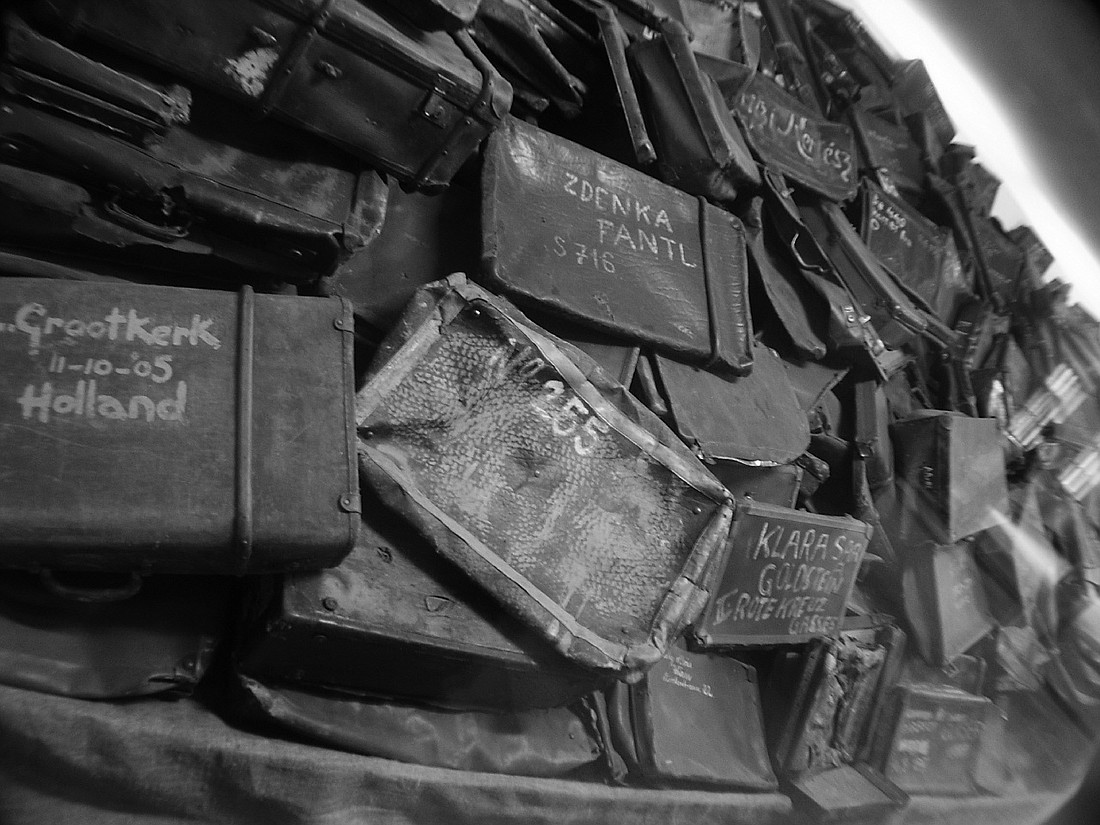- April 17, 2024
-
-
Loading

Loading

Blinded by the night, Beylya Aleynikova tramped through a thickly snow-covered field to escape the Nazis in March of 1942. For several days preceding her escape, the 65-year-old Russian Jew hid in an oven in a ghetto near Tolochin, 250 miles east of Poland.
But her escape was short lived, as she pushed her frail frame step by sinking step in search of salvation in Ivashkevich, just to the other side of that starlit frozen field. She died of a heart attack before reaching the town in the distance.
Though she would die alone that night, Aleynikova's was not a lonely fate.
"More than 70 years ago, the world went dark..." Stanlee Stahl, executive vice president for the Jewish Foundation for the Righteous said.
But on those bitter cold nights of a relentless winter in Eastern Europe, some would survive to see daylight again. And for many, help came from unlikely places.
Before a packed Jewish Community Center in Maitland on April 11, Stahl wove a few more threads into the evolving history of the holocaust, telling some of the untold tales of survival and courage in one of the world's darkest moments.
Yom Hashoah sprang from the ashes of WWII as Holocaust Remembrance Day, a mournful recollection of the horrors of that time vivified by a celebration of the courage of those who risked their lives to fight back.
As the Nazis ransacked Polish homes, rounding up Jews and shipping them into concentration camps where many would lose their lives, some friends and neighbors opened their homes as secret shelters. Many knew they would be killed if the Nazis discovered their acts of defiance.
"Not only having the courage to care, but having the courage to act," Stahl said of those brave few.
Non-Jews created hiding places for their hunted neighbors wherever they could find, and where they hoped the Nazis would never look.
A Romanian baker hid four Jews from the German Gestapo in his cramped, middle oven, careful never to use it.
Jews made "careless choices" when they entered the ghettos. Death was the penalty to all involved if a non-Jew was suspected of helping Jews out in any way.
"A kilo of sugar, a liter of Vodka or a pair of boots would be given (to the person who outed his neighbor) because that's how much they thought a Jew's life was," Stahl said.
Rescuers came from all walks of life, ranging from the well-educated to peasants. By 1939, most of the Jews in Central and Eastern Europe had been outed and marked. But as the Nazis pushed toward Hitler's "final solution" of Jewish extermination in concentration camps, the situation grew desperate for those already marked for death by a yellow Star of David on their lapel. If a Jew wanted to hide, they needed a non-Jew to help them for any chance at survival.
"With the absence of whatever acts these righteous gentiles provided the Jews, whether it was shelter, papers of false identity or scraps of food, it might have proved fatal for the Jew no matter how insignificant the act might have seemed," Stahl said.
On the Sunday that Stahl spoke, she showed the film of a rescued Jew from Turka, Ukraine, reunited with her rescuer for the first time in more than half a century, bringing many in the audience to tears.
Jim Shapiro, president of the Holocaust Memorial Resource and Education Center of Central Florida, located in Maitland, said the documentary was the highlight of the day. That's something Stahl said the Jewish Foundation for the Righteous tries to do as often as it can — reunite the rescued with their rescuers.
Local students who created visual and literary artwork on the subject of rescue immortalized those acts. Sixty-four students from elementary, middle and high schools were honored for their work depicting that rescue and sacrifice.
Then, in the Jewish Community Center, they prayed, and lit candles for those lost more than 65 years ago. Illumination, Stahl said, is why organizations such as hers continue to promote education and remembrance of the Holocaust.
The Jewish Foundation for the Righteous cares for and provides financial support for life to about a 1,000 Christians, Protestants, Catholics and Muslims around the world (about 14 in the U.S.), who are recognized by the Israel Holocaust Authority.
Promoting the importance of Holocaust education in schools is the JFR's second mission.
"We're lighting a small candle in the cave to illuminate it to the world," Stahl said.
Pam Kancher, executive director of the Maitland center said Stahl's talk was "meaningful," "relevant" and delivered the message that "we are each other's brother's keeper."
Tess Weiss, a local Holocaust survivor, sang high praise for the event calling it "very moving, inspiring and promising." She said, "The memory to never forget is preserved" because of organizations like the JFR.
As some of that light of memory flickered away with her final story of rescue and survival, Stahl asked a question: "What would you do?"
"It makes you stop and think about the kind of person you are and the contributions you make," Kancher said.
"Stand up for the stranger, for we are all minorities somewhere, sometime," Stahl said. "I want people to realize that one person can make a difference."
Holocaust Research
To learn more about the Jewish Foundation for the Righteous,
visit www.jfr.org.
To learn more about the Holocaust and its history, visit The Holocaust Memorial Resource and Education Center of Florida at www.holocaustedu.org.